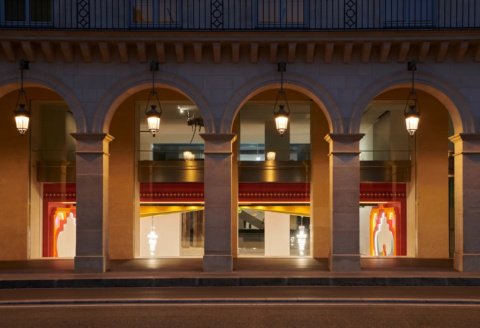Over time, street art has evolved from an underground form of rebellion to one that is now accepted in the business community. These objects, which once adorned subway tunnels and deserted buildings, are now displayed on the walls of high-end hotels and fetch millions of dollars at auction houses. The canvases have grown into profitable enterprises, and are now run by the spray-can artists.
There is more to this change than simply accepting it. What it means to be an artist in the 21st century is entirely reimagined by this.
From the streets to the suites
The foundation of the old art world was scarcity and gatekeeping. Galleries regulated access, critics assessed value, and artists waited for approval. The playbook was thrown out the window by urban artists. They engaged audiences directly, transformed cities into galleries, and made their work inevitable.
Banksy invented this method, but he was not the only one. The streets provided limitless exhibition space, and artists recognised that visibility creates opportunity. Every piece of art became a conversation starter, and every wall could be a billboard. This had a significantly greater impact thanks to social media. Within hours, a mural from Los Angeles could become popular in Tokyo.
Everything changed with the democratisation of exposure. Institutional approval was no longer required for artists to connect with collectors. They required fortitude, vision, and astute business sense.

Building beyond the canvas
Astute urban artists realised early on that their style could transcend galleries and walls. The same striking images that attracted attention to buildings could be used to brand entire product lines, sell sneakers, or create hotels.
Working together became the new currency. Once demeaning street culture, luxury fashion houses began pursuing urban artists for capsule collections. Signature lines were offered by sneaker brands. Installations were commissioned by tech companies. What began as artistic expression evolved into valuable intellectual property that should be licensed and protected.
Consider Shepard Fairey, who created a well-known brand around the world with his OBEY aesthetic. His work retains its artistic credibility when it is used in apparel, accessories, and commercial projects. Instead of diminishing the work, the blurring of the boundaries between art and commerce increased its reach.
Stories of financial success are astounding. You can see the outcome of treating art as a creative outlet and a calculated business venture when you look at Alec Monopoly’s net worth. His iconic Monopoly Man image appears on everything from high-end timepieces to canvases, demonstrating how a distinctive style can become a profitable licensing opportunity.
The paradox of authenticity
Things start to get interesting at this point. As their businesses expand, artists face a unique challenge. Famous for their radical, uncensored, and usually illegal work. That advantage might be weakened by commercialisation. How do you maintain your street cred when you sign business contracts?
The most successful artists use self-control as a coping mechanism. They select collaborations that complement their values and style. It seems like a logical choice to work with a streetwear company, the fast-food chain’s advertisement might not. Controlling the appearance of the work is crucial.
To avoid this, some artists maintain separate streams. Art in galleries is still solely artistic. Commercial projects adhere to different regulations but pay the bills. They can explore both worlds without sacrificing either thanks to this compartmentalisation.

The infrastructure of success
Nowadays, every successful urban artist has a team behind them. Attorneys, social media strategists, studio managers, and licensing representatives. Something more intricate and long-lasting is replacing the romantic notion of the solo artist.
Business skills are rarely taught at art schools. The most successful artists either learn these skills or work with others who do.
Physical infrastructure is also important. Nowadays, a lot of well-known urban artists work out of actual studios with production facilities, assistants, and fabricators. They are producing work at a rate and scale that would have been unattainable if they had done it alone. Ambition is made possible by this industrialisation of art production, but it also calls into question authenticity.
The digital frontier
Digital art and NFTs have created a new source of income, but the market is still unstable. The blockchain provided a logical progression for urban artists who were already at ease with technology and direct-to-consumer transactions. A few have become extremely wealthy. Others have exercised greater caution, awaiting the space’s development.
Without a doubt, digital platforms have given artists greater control over distribution and pricing than in the past. They can track provenance, produce limited editions, and capture resale value, unlike traditional methods.

The long game
When creating sustainable brands, urban artists are considering decades rather than years. They are planning estates, safeguarding their legacy, and thinking about how their work will be viewed for many years to come. That may come across as pretentious, but it’s practical.
Museums that once disregarded street art are now vying for significant pieces. Urban and classical art are both found in private collections. Even though some purists continue to protest, the cultural acceptance is almost total.
The business plan developed by these artists provides a model for innovative business owners in a variety of sectors. Create a direct audience, develop a unique style, use that style on a variety of platforms, continue to maintain quality control, and remain current without following every fad.
Originally, street art was a form of rebellion and protest. It has evolved into a more intricate global industry where business and creativity coexist. The successful artists in this field are more than just skilled painters, they are visionaries who recognise the interdependence of art and business in the contemporary creative economy.
The walls are still important. They are only the beginning, though.




